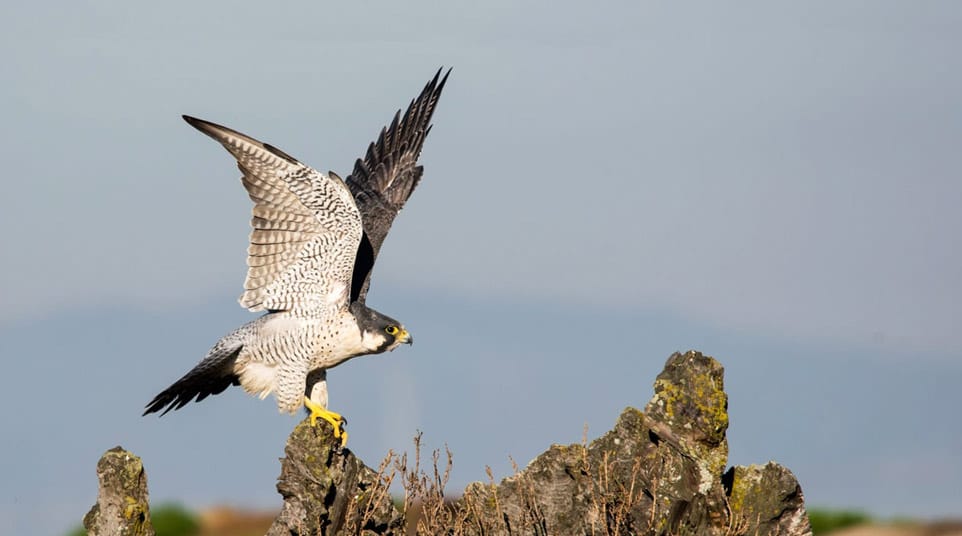- Home >
- Travel Guide >
- Galapagos Islands >
- Animals & Wildlife >
- Galapagos Peregrine Falcon
Galapagos Peregrine Falcon Facts
Name: Peregrine Falcon
Family: Falconidae
Scientific Name: Falco peregrinus
Length: 39 - 50 cm (15.4 - 19.7 in)
Weight: 95 -115 cm (37 - 45 in)
Category: Land Birds
Number of Species: 49
Endemic Species: 22
In total, 49 species of land birds have been recorded in the Galapagos, 22 of which are endemic to the Islands. Land birds can be divided into 5 categories: Diurnal Raptors, Night Birds, Larger Land Birds, Aerial Feeders and Smaller Land Birds.
Category: Diurnal Raptors
Endemic subspecies: Galapagos Hawk
Just three species of diurnal (or day-flying) raptor birds have been recorded in Galapagos, one of which is an endemic resident. Each of the species represents a different group. The most commonly seen of these species in a Galapagos cruise is the Galapagos Hawk.
Falcons are medium-sized birds of prey with long, pointed wings which are often held angled at the wrist or carpal joint, hooked bills, a fleshy cere, relatively short but powerful legs and feet, and sharp, curved talons. The sexes are alike although females are larger than males.
Identification:
The only falcon recorded; a powerful flier, with pointed, rather broad-based wings and slow, stiff wingbeats, often appearing quite stocky. Sexes alike, although females appreciably larger than males. /em>ADULT: upperparts blue-grey; underparts white, narrowly barred grey; crown black, extending to prominent moustachials which contrast with white throat; legs, cere and eye-ring yellow. JUEVENILE / IMMATURE: Similar to adult but browner overall with streaked rather than barred breast.
Behavior:
Feeds principally on birds which are pursued at speed and caught in flight, often following a stoop from a great height

